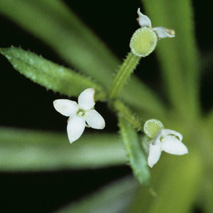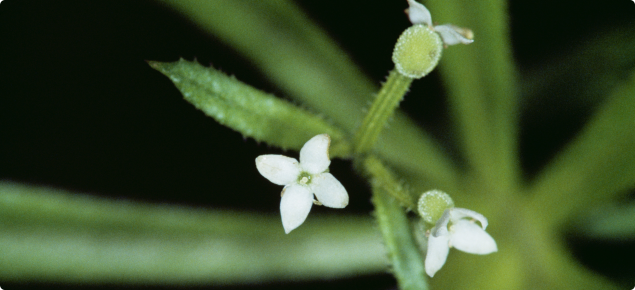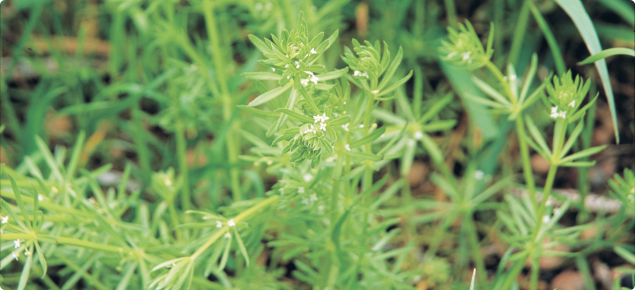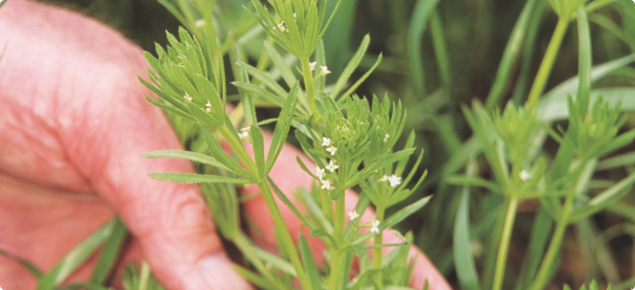Form: herbaceous — annual
Status: present in WA
Native range is from Europe to central Asia. A widespread but relatively uncommon weed of cultivated land and other disturbed areas in temperate parts of the world, including south east Australia.
In Australia it is mainly found in paddocks that have been cropped for a number of years. Appears worse in areas that have pulse crops incorporated in to the rotation. Principally occurring on alkaline soils with annual rainfall from 300-550 millimetres, but also found on other soil types.
Appearance
Stems: sprawling stems usually 50 centimetres long, can be up to one metre long. Square when cut across. Stems covered with downwardly pointing prickles, especially along the ribs.
Leaves: long narrow flat leaves arranged in whorls, first leaves arranged in groups of four, with a pointed tip and a few hairs along the margins, mature leaves in whorls of six or seven, broader, with backwardly pointed prickles on the margin.
Flowers: small and white, carried on short branched stems arising from the leaf whorl.
Fruit: each flower forms a pair of 'seeds' that separate when mature. They are globular, two to three millimetres in diameter, light to dark brown when dry, have a rough surface and borne on a hooked stem.
Online weed identification training
Login or set up a new account on DPIRD's online training site to access:
- a training course on how to identify bedstraw and report it.
- training material that you can use to teach community groups how to identify bedstraw.
Agricultural and economic impact
Bedstraw is a competitive climbing plant that can form dense tangled clumps in crops. There are effective herbicides for cereal crops and grass pastures, but it is more difficult to control bedstraw in canola, pulses and legume-based pastures.
Known host to the stem nematode, Ditylenchus dipsaci. Its seeds contaminate fodder and grain. At high densities can cause considerable yield loss in crops. Known in WA from a few separate sites on farms in the central and southern wheatbelt.
Modelling indicates that three horned bedstraw would cost Western Australia $1.5 million each year if it is not managed and $1.4 million if it is managed.
Cook, D. 2014. Agricultural Resource Risk Management. Strategic Report. Impact Assessments for Declared Plants in Western Australia. July 2014. DAFWA.
Declared pest category
The Western Australian Organism List (WAOL) contains information on the area(s) in which this pest is declared and the control and keeping categories to which it has been assigned in Western Australia (WA). Search for three-horned bedstraw in the WAOL using the scientific name Galium tricornutum.
Requirements for land owners/occupiers and other persons
Requirements for land owners/occupiers and other persons if this pest is found can be sourced through the declared plant requirements link.
Search > detect > report
| MyPestGuide™ Reporter | Pest and Disease Information Service (PaDIS) |
Detectability: medium difficulty to find. Bedstraw is hard to distinguish from other Galium species. However, it is easy to recognise amongst crop and pasture plants because of its distinctive appearance and feel.
Who is likely to find it: only cereal, pulse and oilseed grain growers or agronomists in the South West Land Division.
When to find it: plants are most likely to be found from late winter into spring, in any part of the South West Land Division where broadacre crops are grown.
Where to find it: new infestations are likely to be identified in young crops between rows before the crop canopy closes. It may also be found in pastures and fallow paddocks. Bedstraw is most likely to be detected in grain through a screening program implemented by CBH Group funded by Grains, Seeds, and Hay Industry Management Committee. Once bedstraw is confirmed, surveillance must be carried out.
Control method
Report the presence of this organism before undertaking a control measure. Control methods for this declared plant can be found through the three horned bedstraw control link.
Management calendar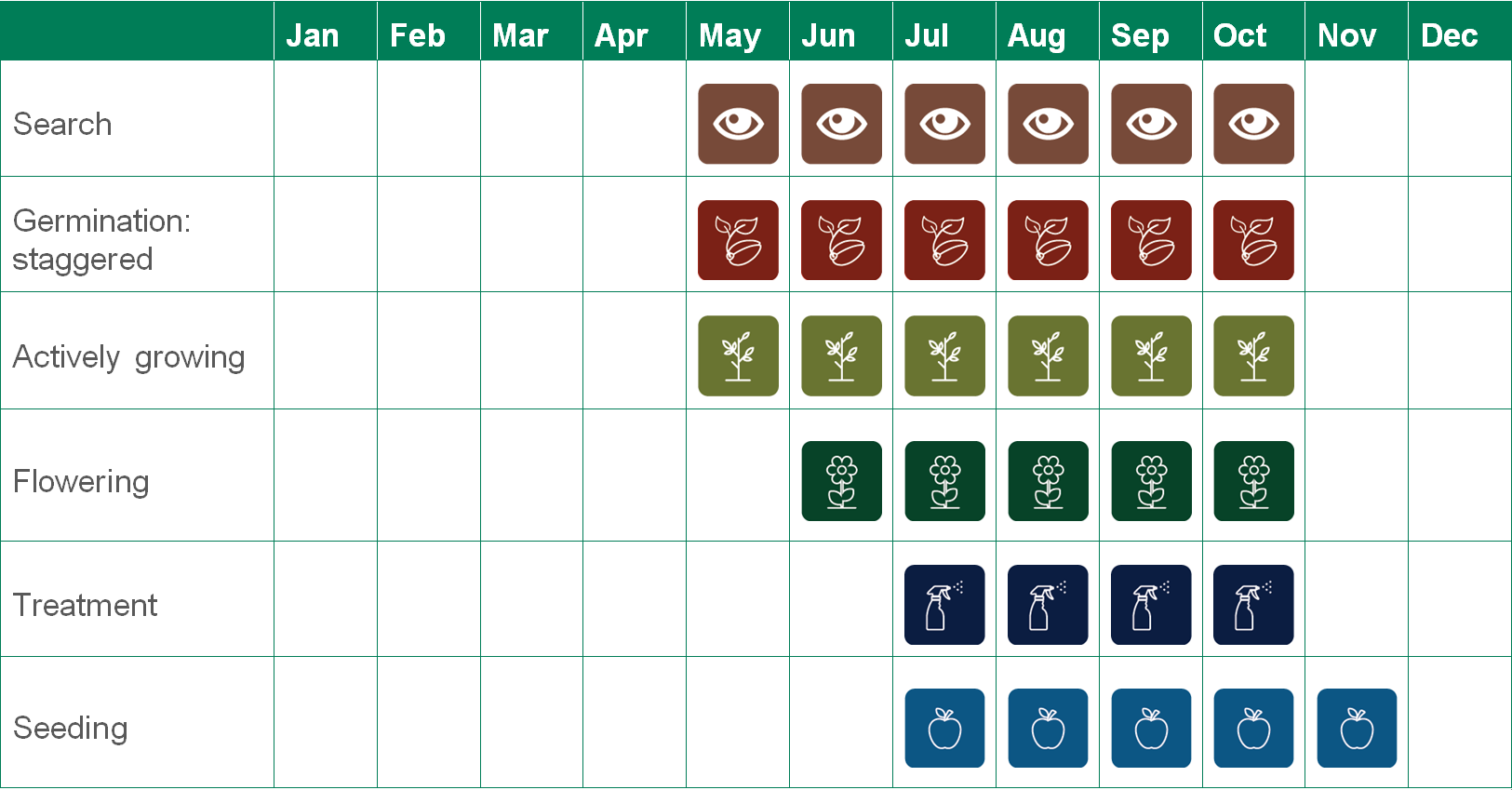
Further information
Further information on three horned bedstraw can be found through the three-horned bedstraw: what you should know page.

